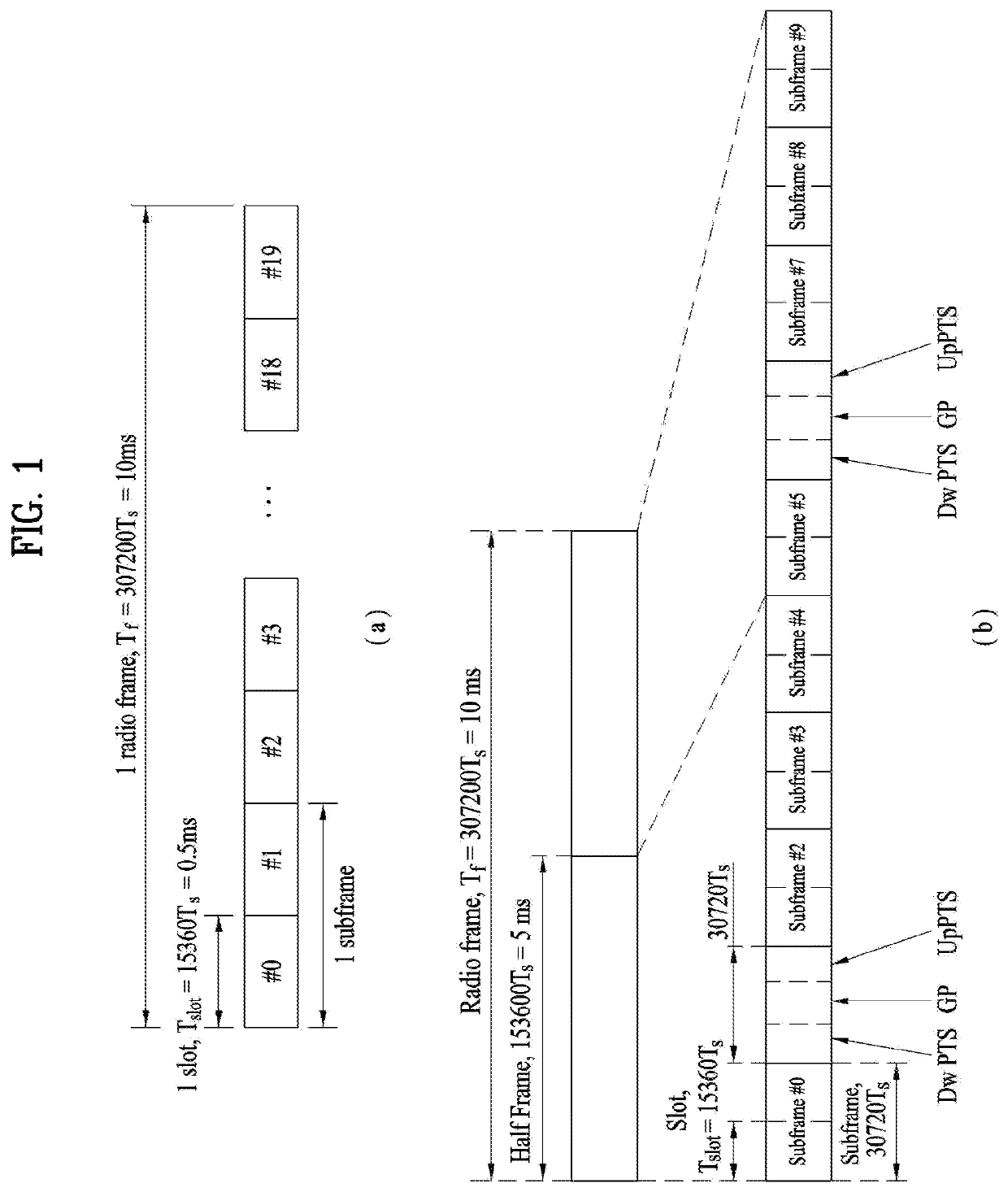Method and user equipment for transmitting random access signals, and method and base station for receiving random access signals
a random access signal and user equipment technology, applied in the field of wireless communication systems, to achieve the effect of low cost/complexity, efficient transmission/receiving, and improved overall throughput of radio communication systems
- Summary
- Abstract
- Description
- Claims
- Application Information
AI Technical Summary
Benefits of technology
Problems solved by technology
Method used
Image
Examples
case 1
[0163] Tx / Rx Reciprocity Holds at both of TRP and UE
[0164]In this case, additional handling of beam alignments between a TRP and a UE is not required, but the UE determines its Tx / Rx beam based on the measurement on the DL broadcast signal beam sweeping. Beam scanning operation is conducted at the UE on the DL beam swept broadcast channel / signal, and the UE determines best received beam direction based on the DL measurement. If Tx / Rx reciprocity holds at the UE, the UE is able to determine its transmission beam direction based on the received beam. Hence, UE attempts PRACH preamble transmission with the same or similar direction as the best received signal / channel on a RACH resource associated with the beam direction.
[0165]With the assumption that Tx / Rx reciprocity holds at both TRP and UE, the UE may report the best received beam direction based on the best received DL measurement quality, and the TRP can easily determine the UE's receiving beam direction. Similarly, the UE can dec...
case 2
[0168] Tx / Rx Reciprocity Does not Hold at UE side but it Holds at TRP Side
[0169]In this case, a TRP can determine its uplink receiving beam based on the UE's DL signal measurement but a UE is not able to determine its transmission beam for uplink based on the DL measurement on the DL broadcast signal. In other words, the TRP is able to decide its receiving beam based on DL measurement but the UE is not able to determine its UL transmission beam. Therefore, the UE needs to beam sweep its UL transmission so that a TRP receiver determines the best received direction(s) from the UE and signals the best UL transmission beam directions(s) of the UE. Based on the signaling of UL beam (direction) information, i.e., information indicating from which beam direction the TRP can hear with best performance, the UE determines its best UL transmission beam direction on the RACH resource afterwards (e.g. RACH Msg3).
[0170]Since Tx / Rx reciprocity is available at a TRP, PRACH resource (i.e., RACH reso...
case 3
[0171] Tx / Rx Reciprocity does not Hold at TRP side but it Holds at UE Side
[0172]In this case, a TRP is not able to determine its uplink receiving beam based on the UE's DL signal measurement, while a UE is able to determine its uplink transmission beam direction based on DL signal measurement. Hence, strictly speaking, a RACH resource cannot be associated with the DL transmission signal beam direction, but it should be associated with receiving beam direction at the TRP. However, a UE transmitting a PRACH preamble has to know on which time-frequency resource (RACH resource) the PRACH preamble should be transmitted. Therefore, the RACH resource has to be associated with a DL transmission signal and a DL transmission direction.
[0173]TRP's best transmission beam towards a specific UE can be informed by the UE based on the DL measurement at the UE side, and the TRP needs to scan PRACH preamble with different receiving beam directions from the UE in order to determine the TRP's best rece...
PUM
 Login to View More
Login to View More Abstract
Description
Claims
Application Information
 Login to View More
Login to View More - R&D
- Intellectual Property
- Life Sciences
- Materials
- Tech Scout
- Unparalleled Data Quality
- Higher Quality Content
- 60% Fewer Hallucinations
Browse by: Latest US Patents, China's latest patents, Technical Efficacy Thesaurus, Application Domain, Technology Topic, Popular Technical Reports.
© 2025 PatSnap. All rights reserved.Legal|Privacy policy|Modern Slavery Act Transparency Statement|Sitemap|About US| Contact US: help@patsnap.com



